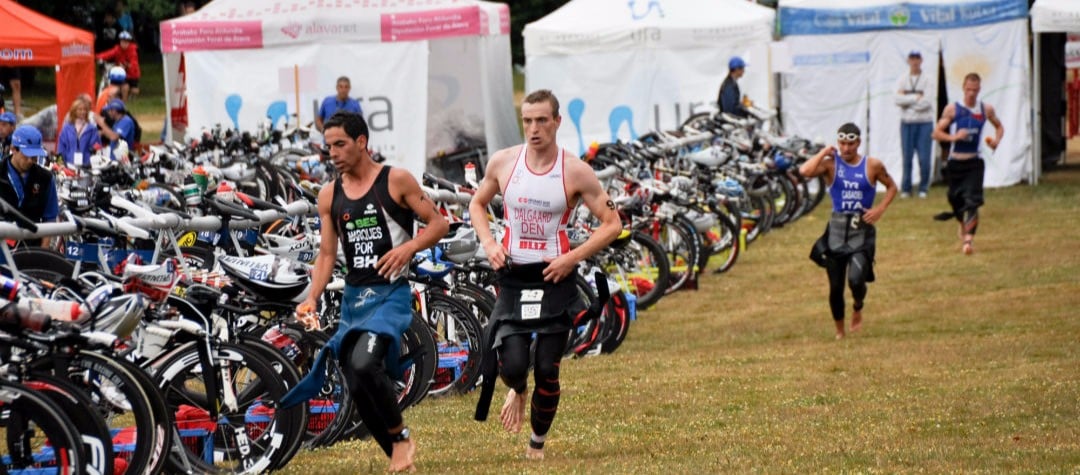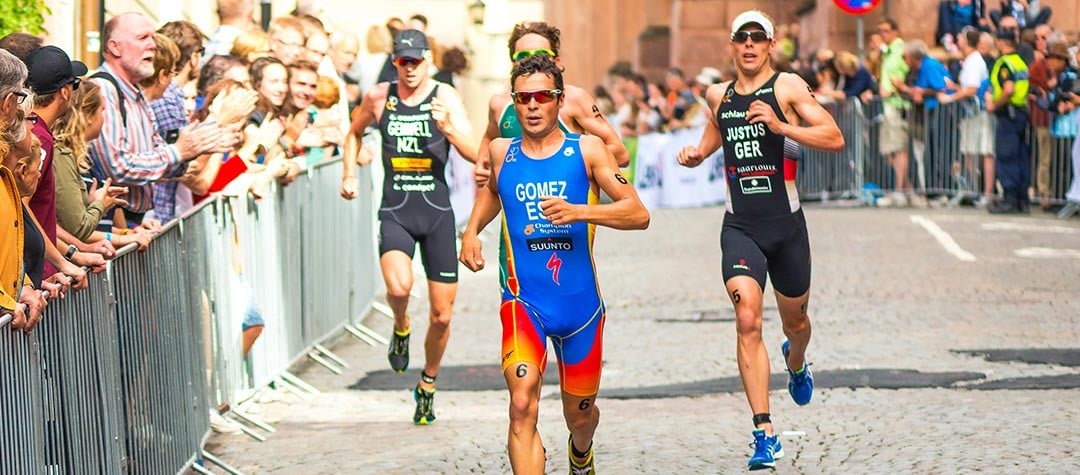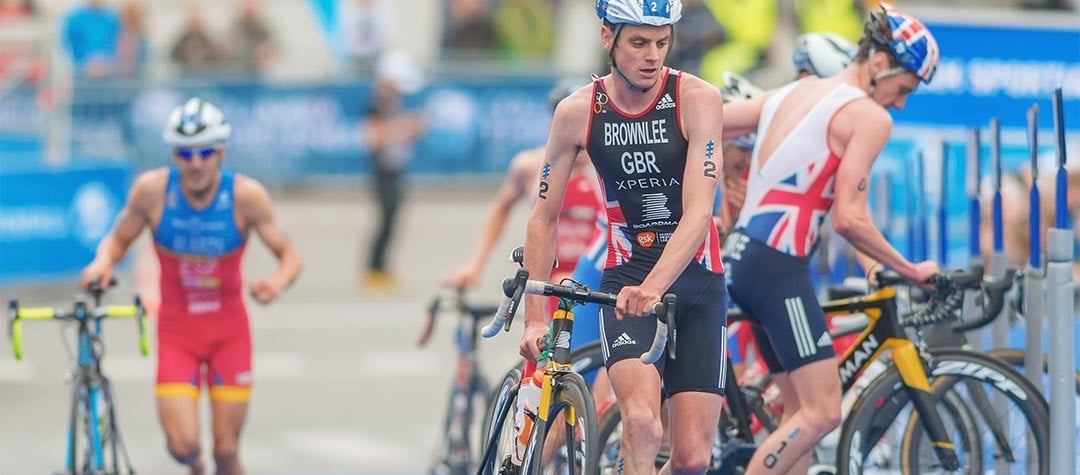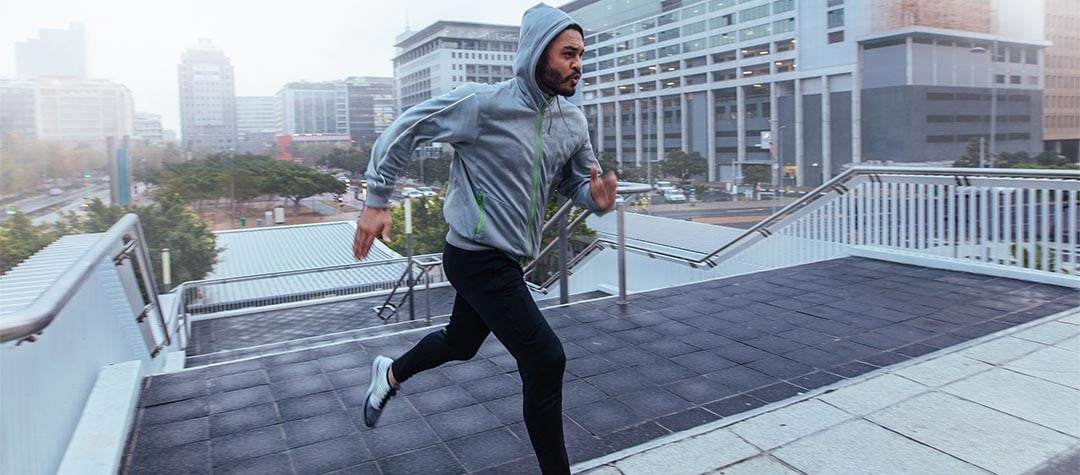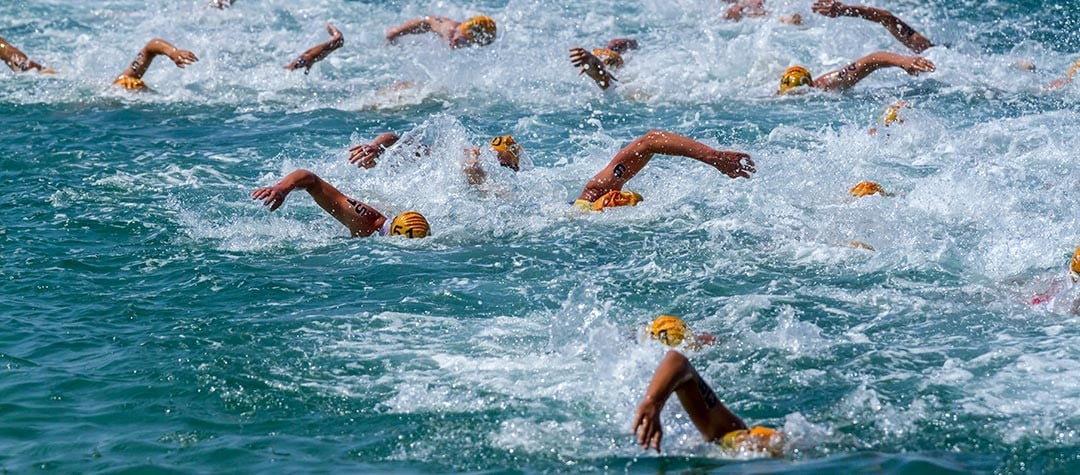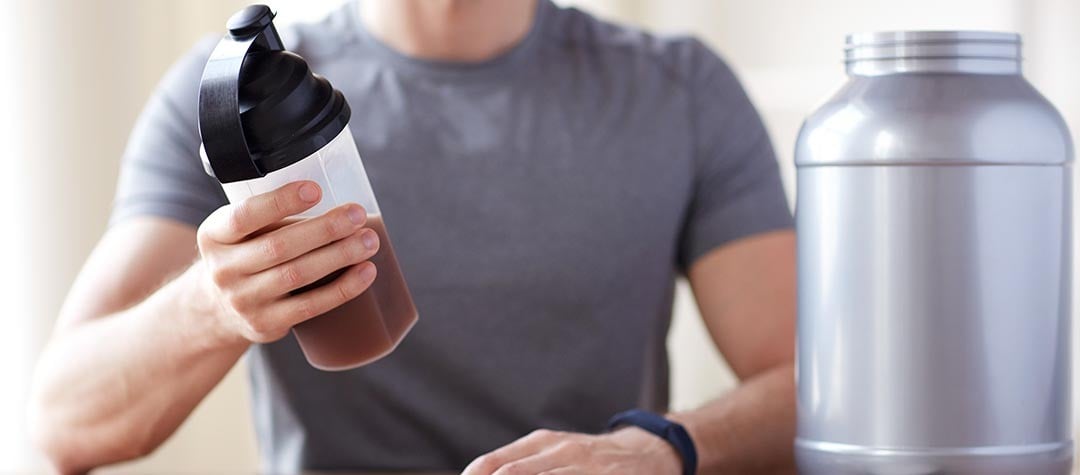Nothing slows down your triathlon quite like getting caught up in an awkward transitions, so read on for our top tips on transitioning between the three triathlon disciplines.
The transition area in a triathlon is the section of the course that is set out to hold your bikes and kit for the three stages (swimming, cycling, running) of the race. You will use this area twice; once to change from your swim to your bike, and the second time from your bike to your run. The transition will differ depending on the size of your event - they can be anything from tennis courts at a smaller race, to huge highly organised, fenced-off areas with 2,500 bikes in it for the larger events.
Triathlon transitions always have an ‘in’ and an ‘out’, and you need to stick to these or you’ll risk being disqualified. When approaching the transition for the first time with your bike and kit, the marshals will check your bike and your helmet, and show you the correct entrance and exit. If you are unsure, ask again. It is very important that you understand your triathlon race routes.
Storing your bike in the transition area
Depending on the size of the event, the triathlon transition may be divided into alphabetical order, age groups or numbers. If it is a numbered transition, then find your number and rack your bike.
"When you rack your bike, make sure the bike gear that you have selected is a nice and easy one."
Some prefer to rack the bike with the handlebars, some with the saddle. The choice is yours. Practice accessing your bike in both of these positions, and work out which one you are most comfortable with. When you rack your bike, make sure the bike gear that you have selected is a nice and easy one. This will mean that once you have jumped on the bike during the triathlon, it will easy to get away, and you will not have to push a big gear.
When the bike is racked, have a good look at where your bike is in the transition area. Remember that when you come out of the swim part of the triathlon you have to find your bike, along with a few others. Walk around the transition area and familiarise yourself with the layout. Find out where you will come out of the swim and walk the route that you are going to do. In the entrance, make sure you know how many racks you have to run past before you get to your bike. If you can, look out for a landmark near your bike like a tree or sign that will help you find it during the chaos of the transition. Bear in mind that most races won’t allow you to mark the floor near your bike, or put things on your bike so that you recognise it.
Making your triathlon transition a smooth one
There are a few tricks you can try to store your kit efficiently and speed up your transitions:
- Sunglasses in helmet — opened up so you can get them on quickly.
- Helmet with strap open — the helmet can go straight on with one movement. Check that the helmet fits before you go for your swim.
- If you have worn a wetsuit, throw the suit over the rack, or have a large bag to put it in. Don’t throw it onto your nice dry racing trainers. They will be soaked on your return.
- Keep your area tidy, other people may trip or fall over your cycle shoes that are in the middle of the walkway.
- Make sure you have tried everything on before the race, especially the helmet.
- If you are wearing a separate top that you have at the transition area. Make sure you haven’t pinned your number through both sides! It makes it very hard to get the top on.
- Put your cycle shoes/trainers next to the back or front wheel, depending which way round your bike is. Put them on a towel. If you are wearing socks, open them up so they will slide on easily. Remember to slide your hand over the foot before you enter it in the shoe, as you may have stone stuck to the bottom of the sock.
- If you’re not wearing socks, put some talcum powder inside your shoes. It will help them slide on if they are still wet from the swim. If you’re going to wear cycling shoes, we would suggest that you put them on, walk the bike out of transition and then jump on your bike. It takes a lot of practice to get you feet in and out of your shoes when they are attached to the bike.
- If you are using a number belt, put this on, and pull the number to your back, so that it doesn’t distract you when you are on your bike.
- It’s a good idea to have a bottle of water next to your kit. It’s surprising how thirsty you can be after swimming 1,500m (0.93 miles) during a triathlon.
- Make sure your helmet is clipped on; you can receive a helmet violation and receive a time penalty otherwise. Take your bike and walk to the bike-out gate.
- Once outside the triathlon transition area, you will approach a mount line. This can be painted on a plank of wood or a couple of cones etc. Make sure you know where it is. Once you and your bike are over this line, you can jump on your bike.
When you have finished the cycle leg of the race, you will approach the transition and the marshals will slow you down. Again, this route is something you should plan before the race. You are not allowed to just ‘leave’ your bike anywhere in the transition area. Walk the route so you are ready for it when you have finished the cycle leg. Lay your kit out in the same way that you would put it on. Remember to give yourself plenty of time to set your kit up, and look at your triathlon routes around the transitions. The mount line is often the dismount line, and you must be off you bike before you get to this line. You can get a time penalty if you go over it. Walk the bike through the transition, and remember the route you planned.
Do not remove your helmet until you have racked your bike. Don’t even just undo the clip; you could gain a time penalty. Rack the bike and then take your helmet off. Get your shoes off and your trainers on. We suggest that you use lace locks or elastic laces so that you don’t have to tie a bow in them. Turn your number round and away you go.
Picture credit - Alberto Loyo / Shutterstock.com

